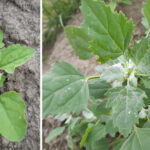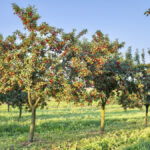Archives

New app helps farmers weigh options for cropping decisions
Resilient Fields is a free web-based tool that simplifies decision-making

Mobile trailers bring soil knowledge, research right to the farm
Units have soil research and audio visual technology to help with research plots and events

Weed of the week: Lamb’s quarters
It’s important to get ahead of this prolific, early-growing species

Policy proposals released ahead of Food Systems Summit
International and Canadian groups have identified food system and agriculture goals

Grain-based foods popular in post-pandemic world
Altered purchasing behaviours and personal preferences may bring opportunities

Ag society turns funding efforts to ag-tech start-ups
First recipient offers technology that assists high-value orchards

Opinion: Stop selling false hope for historical carbon efforts
Pandemic cancels in-person Canada’s Outdoor Farm Show

Interest rate hike protection advised
Rates are forecasted to rise next year, so now is the time to hedge risk

Cellular agriculture makes waves in protein production
Canadian government investment, cellular food policy strategy and regulation are missing yet
